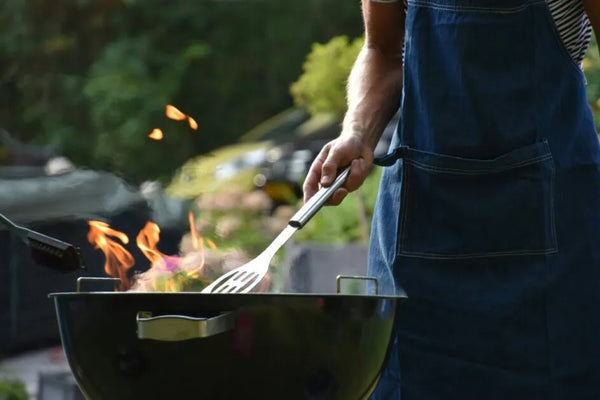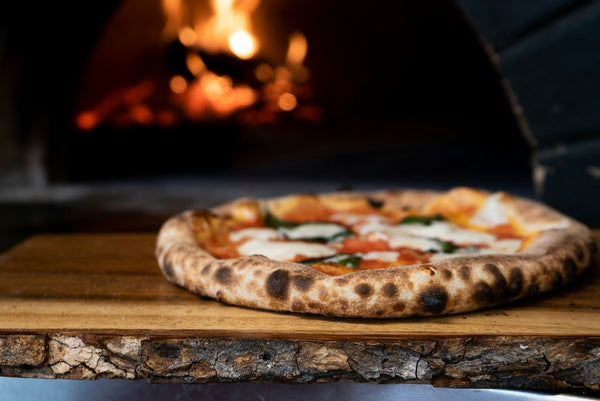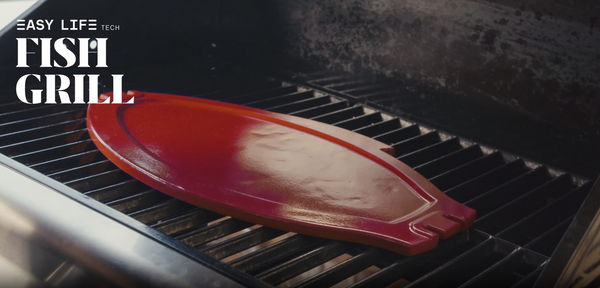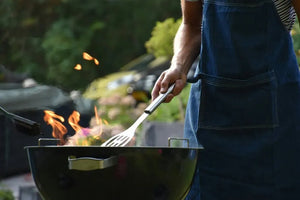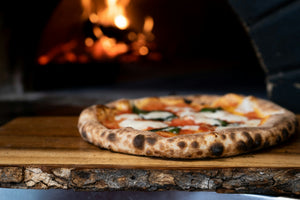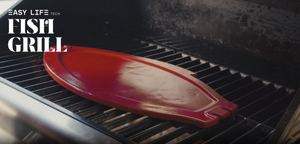
The Science Behind Ceramic Grilling: Unveiling the Flavor Enhancement Secrets

The allure of ceramic grilling lies not just in the tradition it carries, but in the science that enhances the flavor of the food cooked on it. Ceramic grills, due to their material properties, are excellent at retaining and distributing heat evenly, which is essential for cooking food thoroughly without the risk of cold spots. This consistent heat source is a crucial factor in the Maillard reaction, a chemical process that occurs when food is subjected to high temperatures, leading to the browning of the surface and the development of a complex flavor profile.
Moreover, ceramic grills are adept at maintaining optimal humidity levels during cooking. The porous nature of ceramic helps regulate moisture, ensuring that food retains its natural juices and results in a moister end product. When wood chips or chunks are introduced to the equation, they smolder against the hot ceramic, enveloping the food in a blanket of flavorful smoke that imparts that distinctive, smoky taste associated with grilling.
From a scientific standpoint, these attributes combine to explain why food grilled on a ceramic surface might taste superior to that cooked on conventional grills. The controlled environment within a ceramic grill facilitates a variety of cooking styles, from searing at high temperatures to slow roasting or even baking, broadening the culinary possibilities and reinforcing the art and science interplay of cooking.
The Chemistry of Grilling and Flavor Development
The chemistry of grilling unlocks robust flavors through complex reactions between heat and food components. These reactions enrich the taste experience and are central to the appeal of ceramic grilling.
Maillard Reaction and Caramelization
Maillard Reaction: When grilling, the Maillard reaction is a culinary phenomenon that occurs as heat causes proteins and sugars in the meat to react. This process, which requires temperatures above 300°F, creates a complex array of flavor compounds. Meat's surface transforms into a rich brown crust, delivering a savory flavor profile. The amino acids and sugars engage in this reaction, which is fundamental to the delicious taste of grilled foods.
Caramelization: Parallel to the Maillard reaction, caramelization focuses on sugars alone. As these sugars reach high temperatures, they undergo multiple chemical reactions that endow the food with sweetness and depth. Contrary to the Maillard reaction, caramelization lends a subtle, inherent sweetness, typically enhancing the complex flavors developed through the Maillard process.
The Role of Smoke in Flavor
Smoke contributes key flavor notes that are synonymous with grilling. The role of smoke in flavor stems from the combustion of organic materials, like wood, in ceramic grills. Molecules in smoke, including phenols and carbonyls, impart food with an aromatic and unique taste. Moreover, fats dripping onto the source of heat generate additional smoke, which further infuses the food with smoky nuances.
Marinades, Rubs, and Seasoning
Marinades, Rubs, and Seasoning: These components magnify the effects of the Maillard reaction and caramelization. Marinades often contain acids, such as vinegar or citrus juice, which can tenderize the outer layer of meat and introduce new flavor combinations. Rubs, a blend of ground spices and seasoning, adhere to the meat's surface, bringing robust flavors and aiding the formation of a flavorful crust. Seasoning can also include salt, which not only enhances taste but draws out moisture, concentrating flavors during the grilling process.
Ceramic Grills: An Overview of Heat Management
Ceramic grills excel in heat management due to their superior temperature control abilities and the advantages provided by their ceramic material. These attributes contribute significantly to the quality of the cooking methods they offer.
Temperature Control and Distribution
Ceramic grills are celebrated for their precise temperature control and even heat distribution. The thick ceramic walls act as excellent insulators, maintaining consistent interior temperatures. This happens through two primary methods: conduction and radiation. Conduction is the process where heat is directly transferred to the food when it comes in contact with the grill's surface. Radiation allows for heat to circulate within the grill, creating an all-enveloping warmth that cooks food evenly.
- Direct Heat: Achieved by positioning food directly over the charcoal, ideal for searing meats at high temperatures.
- Indirect Heat: Utilized for slower cooking methods by placing food away from the coals, letting radiant heat do the work.
Advantages of Ceramic Material
The ceramic in these grills is not ordinary; it's designed to withstand extreme temperatures and lock in heat. This material is the crux behind a ceramic grill's efficiency:
- High Temperatures: Ceramic grills can reach and sustain higher temperatures than metal grills, favoring methods like searing and roasting.
- Heat Retention: After the charcoal has imparted its flavor, the ceramic continues to provide consistent heat for extended periods, consuming less fuel.
The design of ceramic grills, in combination with using charcoal as a fuel source, leads to an optimal cooking environment where the natural flavors of the food are enhanced, and moisture is retained, resulting in superior taste and texture.

Health Concerns and Safe Grilling Practices
Grilling practices greatly influence the health impact of cooked foods. Awareness of carcinogens and implementation of safe grilling tips can mitigate health risks associated with grilling.
Understanding Carcinogens in Grilled Foods
Carcinogens in grilled foods can pose health risks, such as an increased chance of cancer. Two main types of carcinogenic compounds can form during grilling: heterocyclic amines (HCAs) and polycyclic aromatic hydrocarbons (PAHs). HCAs are created when proteins in meats react at high temperatures, while PAHs are formed when fats and juices from meat drip onto the fire, causing smoke that can coat the surface of the grill and food. This smokiness, often beloved for its flavor, can contribute to the formation of these harmful compounds.
Tips for Reducing Health Risks While Grilling
To minimize the health risks while grilling:
-
Marinate: Marinating meats can significantly reduce the formation of HCAs. Ingredients such as vinegar or lemon juice in marinades can help by creating a protective barrier.
-
Choose Leaner Cuts: Opting for leaner meats with less fat can reduce PAH formation. Trimming excess fat and selecting thin cuts helps in this regard.
-
Avoid Charring: Keep grilled meats from charring excessively and avoid consuming any charred sections, as these areas contain higher levels of carcinogens.
-
Temperature Control: Maintain a moderate flame and avoid direct exposure of meat to open flame to limit carcinogen formation.
By following these tips, individuals can enjoy the benefits of ceramic grilling while minimizing health concerns.
Enhancing the Grill Experience
Selecting premium ingredients and pairing them with the right accompaniments can transform the simplest meals into a memorable feast that tantalizes the taste buds with robust flavors and irresistible aromas.
Choosing the Right Ingredients for Grilling
When it comes to grilling, high-quality meats such as steak, chicken, and fish significantly impact the final taste. For red meat, options like marbled beef steaks impart rich, succulent flavors when grilled, as the fat content contributes to the overall umami—a taste that is deeply satisfying and complex. With chicken, choosing skin-on pieces can help retain moisture and add texture. For fish, firm-fleshed varieties like salmon or tuna hold up well against the high heat of the grill.
Vegetables should be fresh and seasonally appropriate, as they can caramelize beautifully, bringing a natural sweetness that complements the smokiness from the grill. Staples like bell peppers, zucchini, and asparagus are robust options that pair well with any protein.
Flavor Pairing and Accompaniments
The art of flavor pairing enhances the grilling experience by matching complementary tastes and aromas. Sauces play a pivotal role in this, as they can range from sweet fruit-based glazes to tangy BBQ concoctions. The choice of sauce should align with the main grilled item, such as a classic BBQ sauce for burgers or a delicate dill sauce for grilled fish.
Accompaniments like wood chips can add an extra dimension of flavor. For instance, hickory pairs well with red meat, imparting a strong smoky taste, while applewood complements chicken with a lighter, fruity smoke.
Aside from sauces, fresh herbs and spices should be used to create a rub or marinade that enhances the natural flavors of the food. For example, a simple combination of garlic, rosemary, and black pepper is a timeless choice that works well with various meats, especially lamb or steak.
